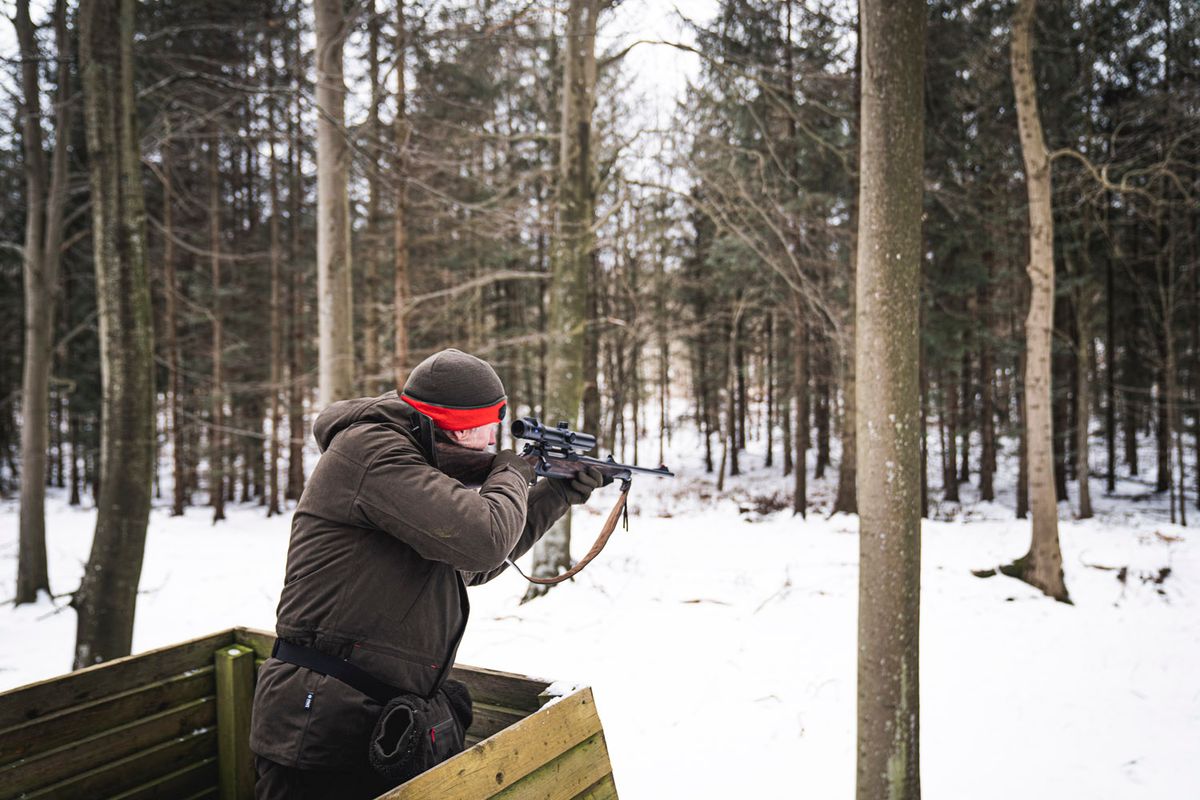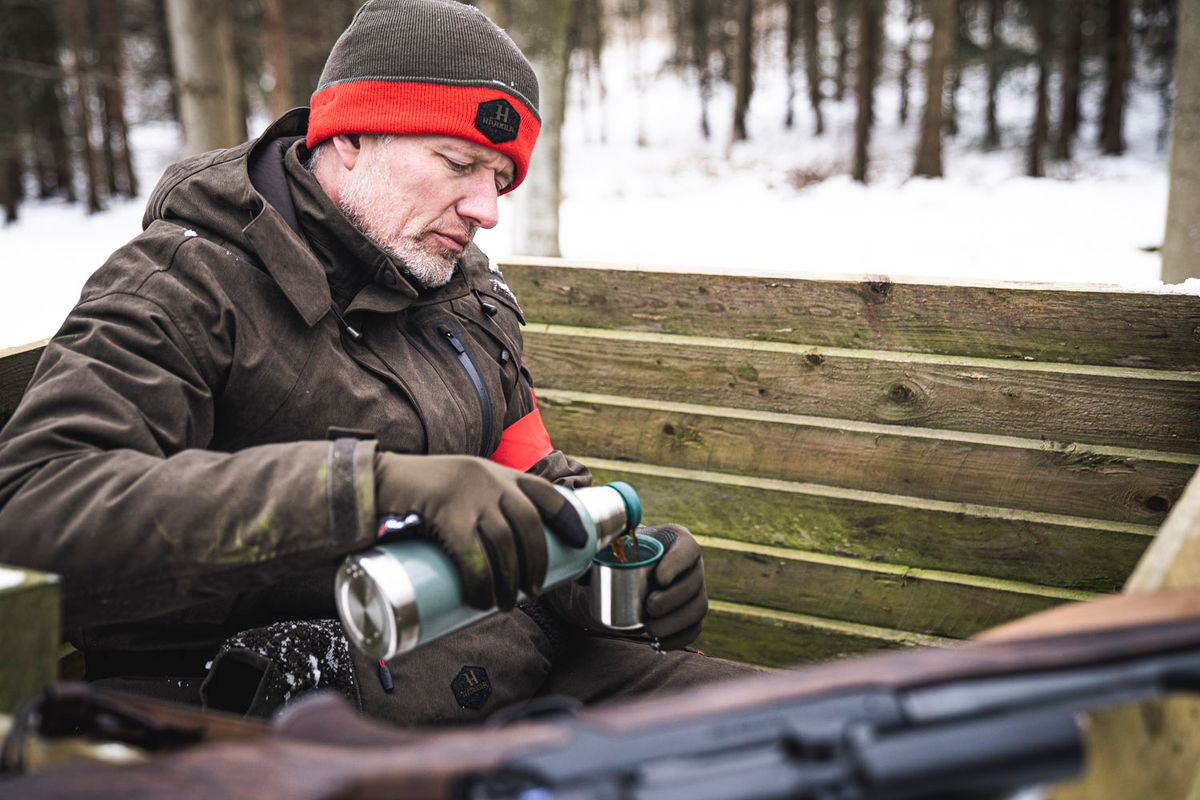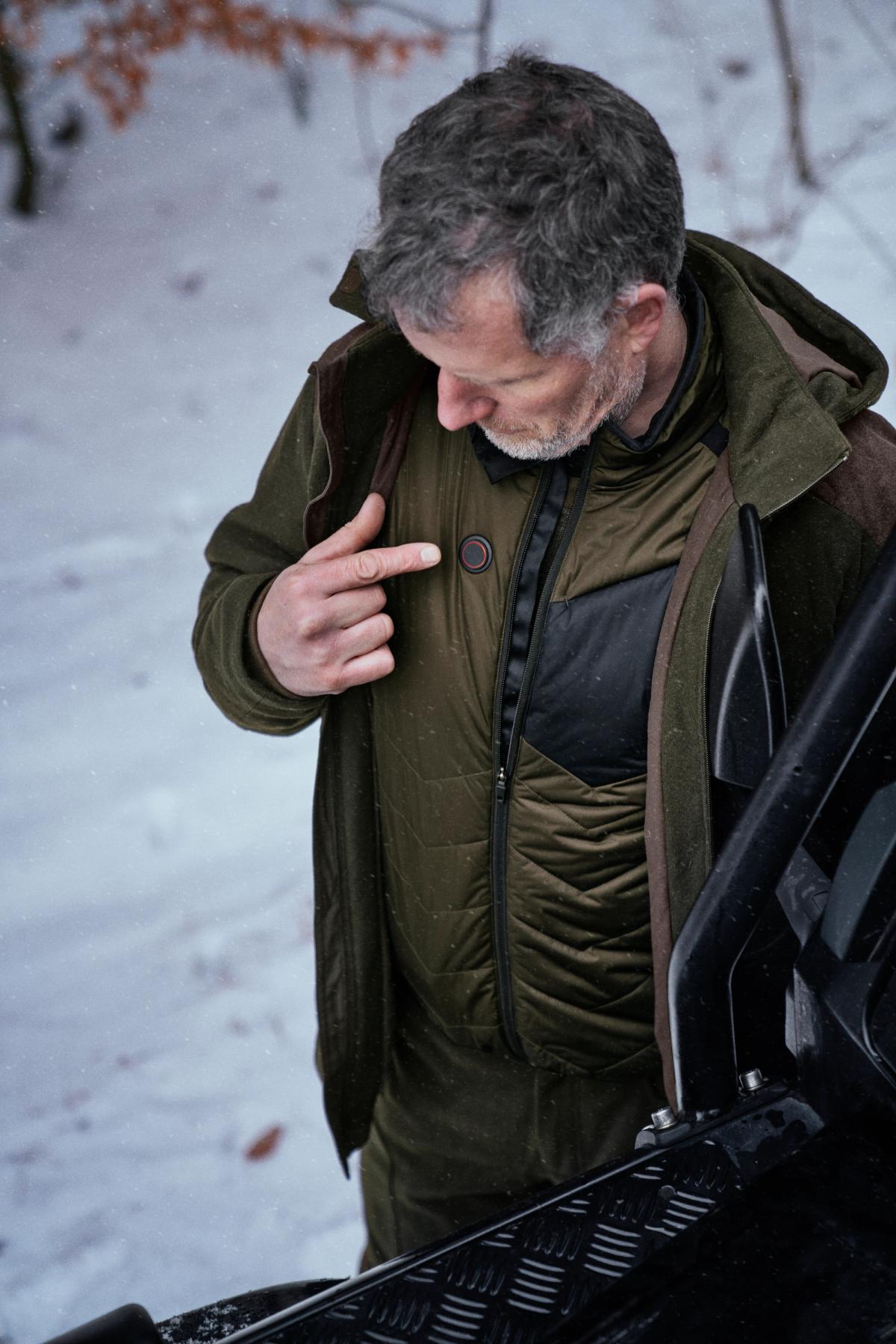Here’s how to keep warm when hunting
Here’s how to keep warm when hunting
Getting cold during a hunt is not only a discomfort, it also makes you a poorer shot. Luckily, it is now easier than ever to dress for low temperatures, for example with modern heat clothing. Here is a lowdown on how to battle the cold.
„Winter is coming”. We all know that iconic motto of House Stark from the Game of Thrones saga. It has entered, like many other classic slogans into popular culture, but there are many indications that it will be spoken more often and with more conviction than any George R.R. fan might expect.
The climate goes crazy, the summers become hotter and the winters colder. The weather becomes expressive. If just a few years ago, the term "winter" simply meant the time of the year when it was getting a bit colder, but we could only dream of snow and ice in Central Europe.
Now wind, snow and sub-zero temperatures are becoming commonplace. For the hunter, of course, this is nothing wrong, quite the opposite. Most good winter stories start with the words: "It was very, very cold", "Snow creaked underfoot", "White snow fell knee-deep in the night". Who would like to hear a story that begins with: "Typically for December in recent years, it was warm and wet with mud everywhere ”?
Yes, real winter is great news for the hunter. As long as he or she is ready for it. Joy, excitement, admiration for nature, rest and relaxation, time to reflect and enjoy life, all that we love about hunting and being outdoors in general just will not happen if you freeze. Penetrating cold will ruin even the best hunt if you fail to prevent it.

Real winter is great news for the hunter. As long as he or she is ready for it.
Staying warm
Staying warm is crucial. You want to focus on hunting and all the fun things mentioned above. Not only will the discomfort take that away from you, it will make you stiff and trembling and it will be much harder for you to take a good shot if an opportunity presents itself. In extreme cases, prolonged cooling of the body can lead to hypothermia and result in something more serious than just a cold or a missed boar.
How to stay warm? Well, it is very similar to heating the house in cold months. You need to have a good insulation and a heat source. The difference is that, unlike a building, a person moves once in a while and then wants to maintain freedom of movement and have a guarantee that if he or she heats up, the clothes will breathe and transfer hot, humid air outside.
Insulation
When I was a child, before leaving the house on cold days, I used to say: “I'll take this thick jacket to warm me up.” My dad, an engineer, always corrected me - it doesn't warm you, it only insulates you.
A few things have changed here, of course, and I'll come back to it, but if you ignore the latest developments, such as the Harkila Heat, clothing is not the heat source. Its task is not to lose heat.
The three most important factors that contribute to heat loss are: cold, wind and humidity. And in order not to get cold during hunting, you need to be able to protect yourself from each of them.

Thermal insulation
The purpose of the thermal insulation material is to prevent the flow of heat. Due to the insulation, the speed of heat loss is slowed down. However, insulation cannot stop heat transfer completely.
One of the factors that influence the quality of the insulation is the density of the material. In general, gases are better insulators than liquids, which are better insulators than solids. The greater the separation between the particles of a material, the more difficult it is to transfer heat through it.
A great natural isolator is simply air, trapped between the hair, fibres or feathers. If it is dry that is - the presence of water molecules in the air increases its thermal conductivity. Air is used to insulate thermos, windows, house walls - it is also responsible for good insulation such as down and wool, and synthetic materials with similar construction such as Primaloft for example.
Wind and moisture protection
As already mentioned, moisture in the air increases heat transfer. It is even worse when the clothes get wet because of rain or perspiration. It may then lose most of its insulating properties. Both wind and moisture also strongly influence the perceived temperature.
The bad news is that the lower the temperature, the greater the importance of wind and moisture. In dry weather, low temperatures are relatively harmless - but when it gets ugly outside, you need to be really well protected against heat loss.
So how to keep warm when hunting?
- In general, it is better to have more layers than just a single thick one. The accumulated air between the clothes works as an additional insulation. Besides - it's much easier to adjust, you can always take something off when it gets warmer (or you need to move) and put it on when it gets colder, or you are going to sit still for a longer period of time.
- Protect yourself from the wind. Multiple layers work well, but sometimes a material with a wind barrier is needed.
- Stay dry. Use clothes with membranes – they will protect you from the outside moisture and transfer the humidity you generate yourself. Avoid overheating – it is much harder to stay warm when you sweat.
So much for insulation. Time to talk a little bit about the heat source.

Heat source
As mentioned above, no insulation is a complete barrier against heat loss. The good news is that our organism is a source of heat. It will work to keep the temperature constant. Usually, to stay comfortable, all you need is good insulation, and your body will do its job.
Not unlike a furnace, the body needs fuel to provide the heat. If you are hungry, you will get cold sooner than later. A meal during the hunt is not only an opportunity to see friends and share exciting stories. It's time to refill the tank. The problem is that sometimes the lunch break is delayed, or due to random reasons it is postponed to the end of the hunt. Therefore - in your own interest, it is good to take a sandwich or a snack, even when the organizer is supposed to provide food.
Many people take a bar of chocolate when going on a long hike to the mountains. The weather might break, one might get lost, something unpleasant might happen. Sweets are not only a source of quick energy, but also improve the mood. And in the nature of hunting there is also failure - from my own experience I know that it is much easier to swallow with a bite of chocolate.
Lastly, I don't think I need to mention the importance of a thermos with hot tea with honey and lemon. It really works wonders.

What if the insulation layer was also a source of heat?
Only a few years ago that would be about it. Not much to add. It has changed though. One of the wonders the development of technology has brought us is a thin membrane placed in the clothes, which gets warm, when connected to a power source. Moreover, the heat level can be adjusted to a temperature specified in the smartphone application. Brilliant and simple. You must have heard about the Harkila Heat. It is brilliant and nowadays it is difficult for me to imagine a winter driven hunt without it.
But no matter how simple it sounds, you still need to know how to use it and how to dress. Never in my life have I been as cold during hunting as when I first put the Harkila Heat vest on. It was a driven hunt, with two drives – I was supposed to hunt during the first one and check the shot results with my dog during the second.
I did not have a thermos with me, I did not take a sandwich, because I was not expecting just one drive to be long. It took over two hours. I had a t-shirt on me, the Heat vest, and my Wildboar Pro jacket. And I expected it to be enough. Boy, was I wrong… The tracking jacket perfectly transfers heat to the outside, so as not to overheat and sweat. The effect was that whatever HEAT could had given me was escaping into the atmosphere. In a thermal imager, I would probably look like an oven. I was shaking with the cold, I couldn't keep anything that the heating membrane was giving.
I know better now. Keep the HEAT as close to the body as possible. Do not insulate against the warmth it gives. And then use a good insulation over it to keep the warmth inside. That’s how you do it.
Staying warm and comfortable is all about insulation, heat source and a good meal. Then they can bring on the wild boar. Regardless of the weather.
// Written in coporation with Lukasz Dzierzanowski, who is an author, hunter, blood tracker and gun enthusiast from Poland. When not hunting, he teaches Computer Engineering at a technical university in his hometown of Opole. Photos by Pulsar and Härkila //